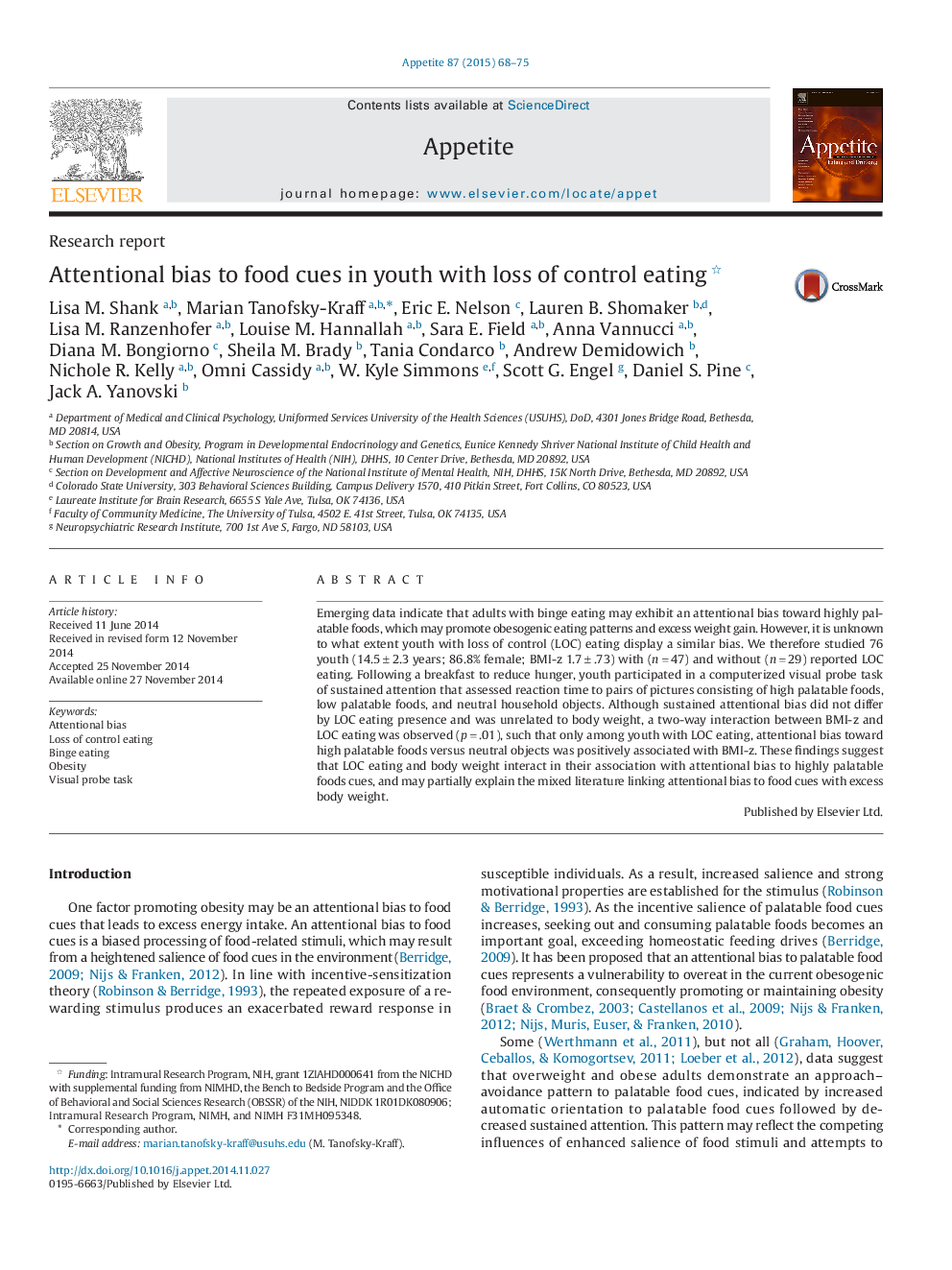| Article ID | Journal | Published Year | Pages | File Type |
|---|---|---|---|---|
| 7309139 | Appetite | 2015 | 8 Pages |
Abstract
Emerging data indicate that adults with binge eating may exhibit an attentional bias toward highly palatable foods, which may promote obesogenic eating patterns and excess weight gain. However, it is unknown to what extent youth with loss of control (LOC) eating display a similar bias. We therefore studied 76 youth (14.5â±â2.3 years; 86.8% female; BMI-z 1.7â±â.73) with (nâ=â47) and without (nâ=â29) reported LOC eating. Following a breakfast to reduce hunger, youth participated in a computerized visual probe task of sustained attention that assessed reaction time to pairs of pictures consisting of high palatable foods, low palatable foods, and neutral household objects. Although sustained attentional bias did not differ by LOC eating presence and was unrelated to body weight, a two-way interaction between BMI-z and LOC eating was observed (pâ=â.01), such that only among youth with LOC eating, attentional bias toward high palatable foods versus neutral objects was positively associated with BMI-z. These findings suggest that LOC eating and body weight interact in their association with attentional bias to highly palatable foods cues, and may partially explain the mixed literature linking attentional bias to food cues with excess body weight.
Related Topics
Life Sciences
Agricultural and Biological Sciences
Food Science
Authors
Lisa M. Shank, Marian Tanofsky-Kraff, Eric E. Nelson, Lauren B. Shomaker, Lisa M. Ranzenhofer, Louise M. Hannallah, Sara E. Field, Anna Vannucci, Diana M. Bongiorno, Sheila M. Brady, Tania Condarco, Andrew Demidowich, Nichole R. Kelly, Omni Cassidy,
